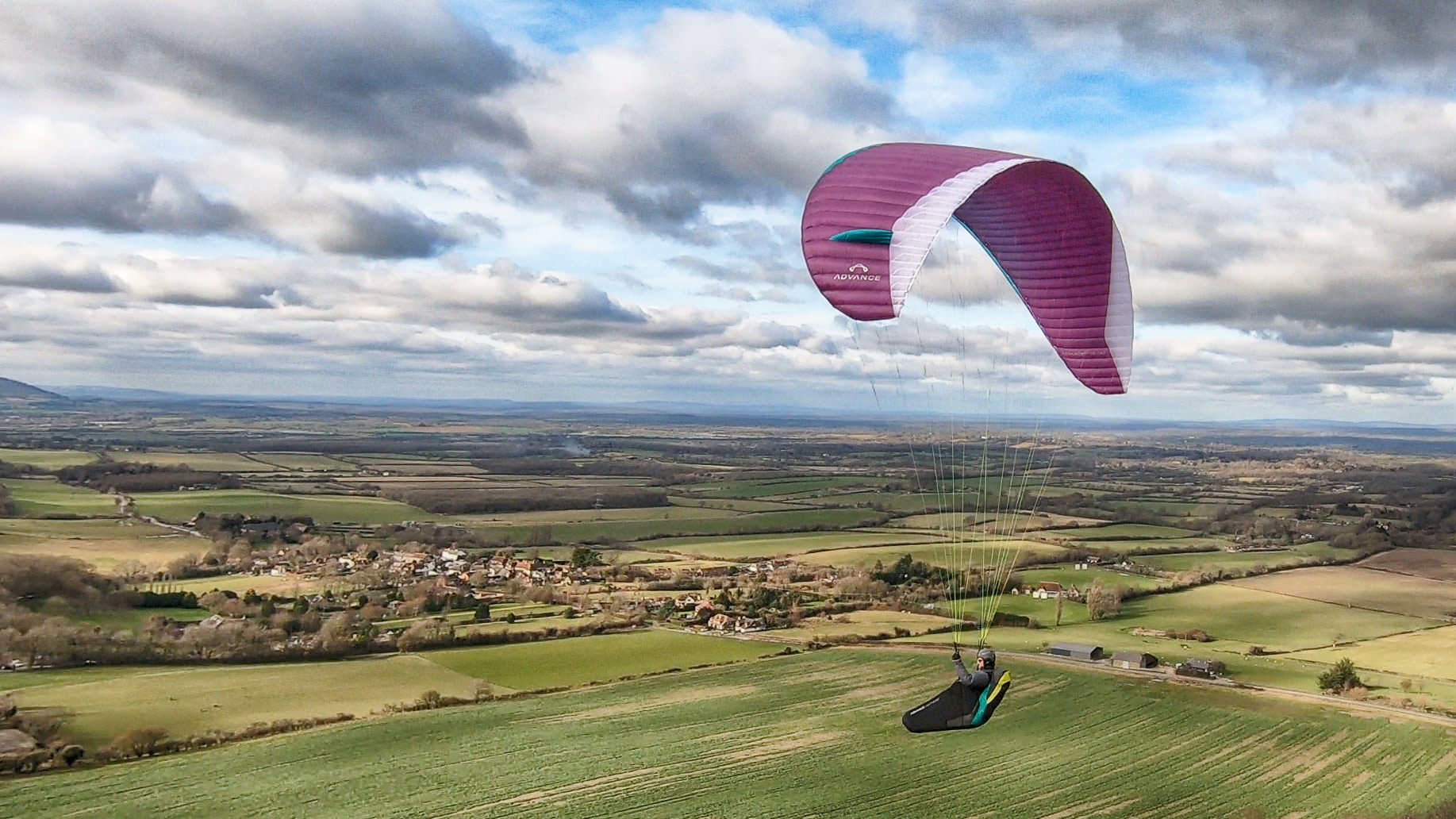
The Advance EPSILON 9 aims to be an accessible intermediate, what we call a Progression wing, designed to help you progress in your flying after your first wing, or just have fun in the air without worrying. It is placed mid-way between the very-capable Alpha 6 and the higher performing Iota 2.
Advance EPSILON 9: on the ground

Launching in strong wind was a breeze. Most Advance wings are excellent in this regard – you can just give the wing a short impulse by stepping back without holding the risers and the wing will rise in a steady arc without the acceleration that can be caused on some wings by pulling on the A’s. If you prefer to use the traditional launch with A risers, there didn’t seem to be much acceleration beyond the overhead point even when pulling too hard. The EPSILON 9 seems to shrug off this energy and just waits for you to move off the slope.
It launched easily in light winds, from the side, in cobra position, wherever. The groundhandling is simple.
Advance EPSILON 9: Handling
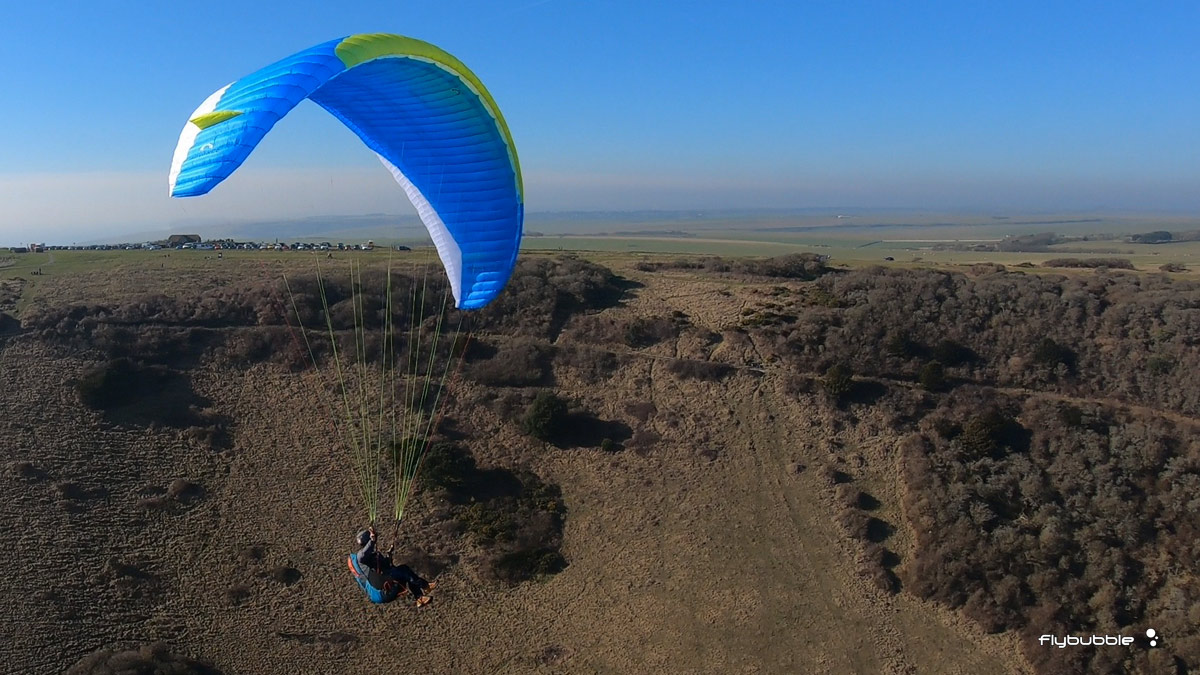
There are many wings offered in this ‘low-mid-classic B class’, some with duller handling and less energy. The EPSILON 9 does not have any feeling of being ‘detuned’; it is precise.
Responses are instant and turns can be very tight, because the wing is agile and retains its speed throughout a turn. Small and light inputs produce quick adjustments that keep you connected with the air currents and allow you to exploit the subtle signs of lift.
Due to the agility, I found that the best place to be was around 50% of the full (certified) weight range - pay attention to the 'ideal weight range' that Advance recommends. With their seamless weight ranges, there will be only one size that will be correct for you. When flown at the top or slightly over, the EPSILON 9.24 (70-88kg flown at 88) might be a little too sporty for newcomers to the class, whereas on the EPSILON 9.26 (80-100kg, flown at 90) I felt more calm and balanced in the air, yet could still turn very tight.
Advance EPSILON 9: Performance
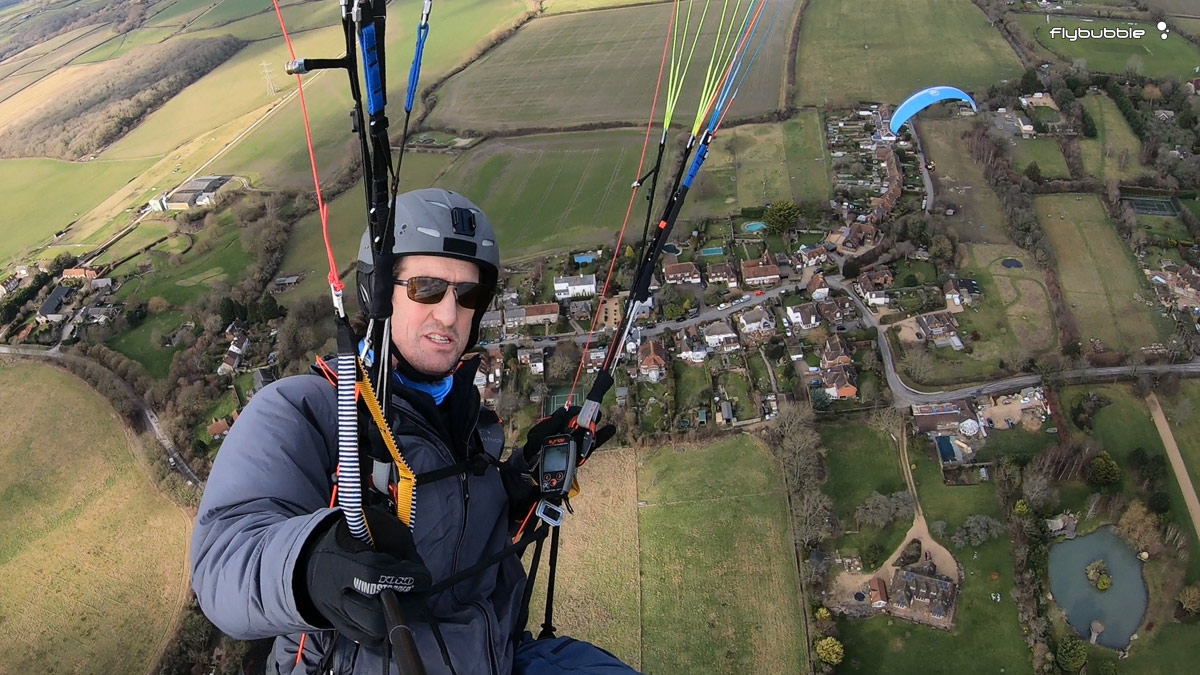
Due to the super-tight turns you can generate, I found I had an advantage over most wings (from all classes) when thermaling in rough or tight cores (the bit where it goes through an inversion, or early in the day, or on high-pressure or lee side conditions).
On glide, I felt confident I could stay with ‘the pack’ of similar modern wings, but noticed a small disadvantage against the latest ‘high Bs’. It’s more refined (less drag) than the EPSILON 8 which I used for 100km over the flats, so you should have no problem doing a downwind 200 with the EPSILON 9 on a good day.
Into a headwind, the lack of high top speed can be noticed, but this is a limitation of the class rather than the wing. Within the lower half of the EN B category, the EPSILON 9 seemed to offer an average top speed, with very little management required.
Advance EPSILON 9: which harness is best?
Using a responsive harness with a seatplate (Advance Success 4) in active air I found that I needed to continuously control the roll movements of the wing by shifting my weight left and right, particularly when I was heavily loaded. It’s great to have a wing that responds to weight shift, giving you the option of fine turn control, but this can increase the workload.
The Advance Lightness 3 changed the feeling of the wing by slowing roll feedback movements down, producing a slightly wallowy feeling of being in a long boat or having shock absorbers. You can feel what the wing is doing but the energy is transferred with some delay. It’s very pleasant if you have the experience to manage a pod harness (using the footplate to stabilise yaw). Being so responsive, the Epsilon 9 is a good match with Lightness 3.
I found the best balance using the split leg Advance Easiness 2, which softened things out a bit when compared to having a seatplate but was more direct than the pod harness. I expect the Advance Progress 3 would also make a great match with the Epsilon. You can really feel which side of the wing is lifting, which helps identify where to go. Contact with the air currents felt obvious and immediate, but nice and gentle.
Advance EPSILON 9: safety manoeuvres
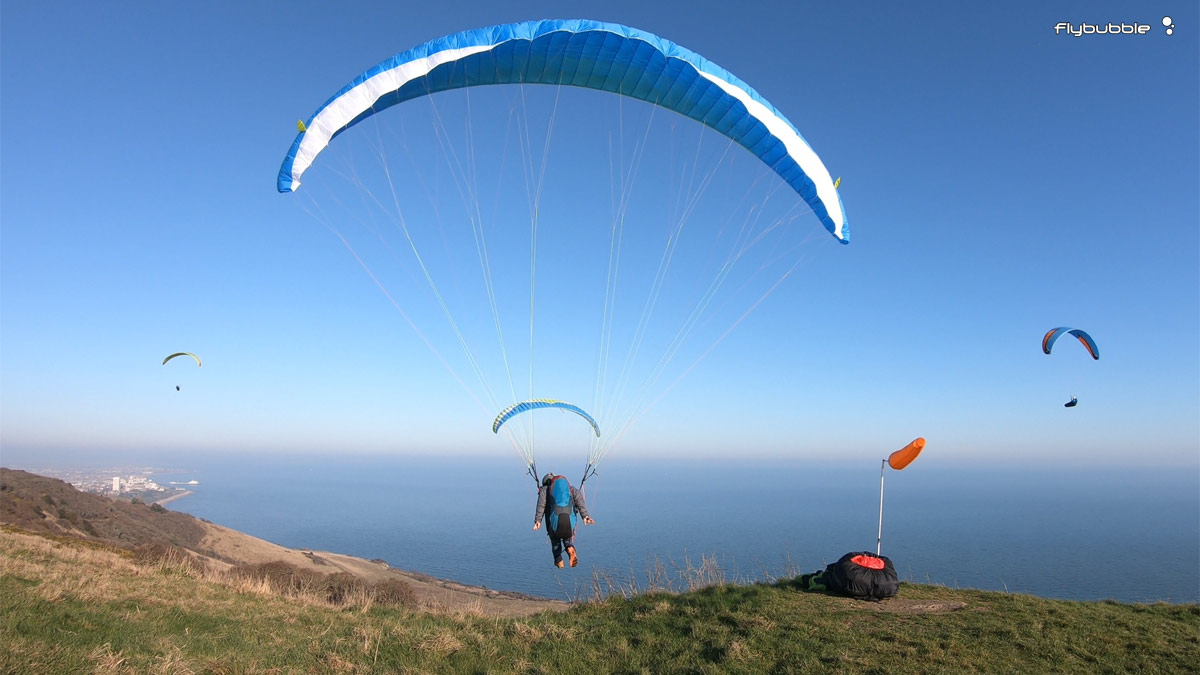
On full speed, the leading edge forms a taut line with very little deformation. I used the rear risers for gentle pitch control inputs, but found them mostly unnecessary as the wing absorbs the bumps very well.
The wing has good resistance to spin, and the tip bends back in a rather obvious way while the wing continues to hold itself together. It mostly drops into an easy spiral turn, building up speed and providing you with lots of safe response time to adjust the over-input.
In straight flight it is possible to reach the stall point on deep brakes, but it is very delayed, with good high pressure and a friendly mushy entry to stall that allows you to simply raise your hands and refly without any snap stall surprises.
The few asymmetrics I performed turned the wing less than I was expecting: for such a roll-responsive wing, it seems to have low energy during collapse recovery.
Big ears were simple to engage (split A risers), stable and they reinflated of their own accord when released, even on half bar.
Advance EPSILON 9: Who is it for?
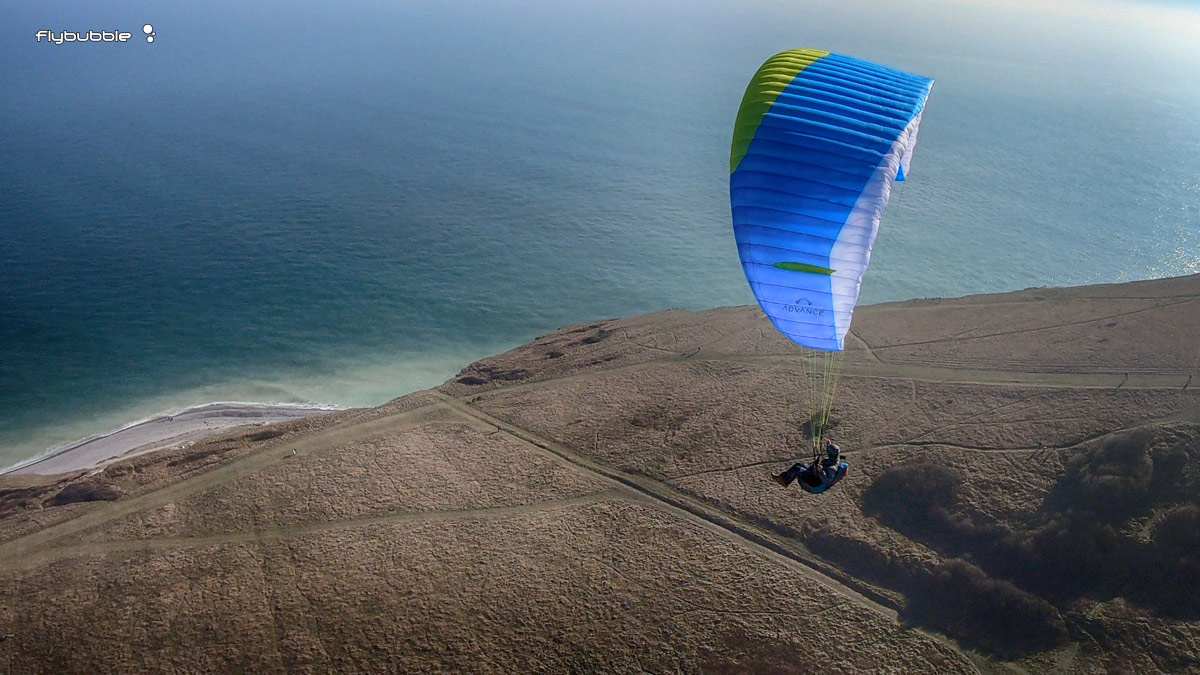
The EPSILON 9 is great for pilots who love to play in the sky, giving you the freedom to carve around like an aerial surfer. It is exceptional for scratching in close to the slope or holding on to narrow updraughts, due to the precise and rapid responses you can get out of it. It’s quite unique to have this sort of handling combined with the high passive safety.
Due to the agility, it is not suited to low airtimers with slow reaction times and heavy inputs.
Advance shows off the EPSILON 9 doing carving turns. It certainly has a fun feel-good factor about it. However if you put your hands up and let the wing do its own thing, it offers a quiet ride through turbulent air, with very little pitch movement and a feeling of good collapse resistance.
Pilots with a developed sense of active flying who appreciate a responsive wing with a calm nature will love it!
Find out more about the Advance EPSILON 9
Advance EPSILON 9 paraglider review video
We take the EPSILON 9 on a spring cross country flight, and share some flying tips with you along the way...
Brought to you by Flybubble
Like what we do? The best way to thank and support us is to buy gear from us and recommend us to others. Review our service on Trustpilot and our products on Flybubble Shop. You can also subscribe to Flybubble Patreon. Thank you!

